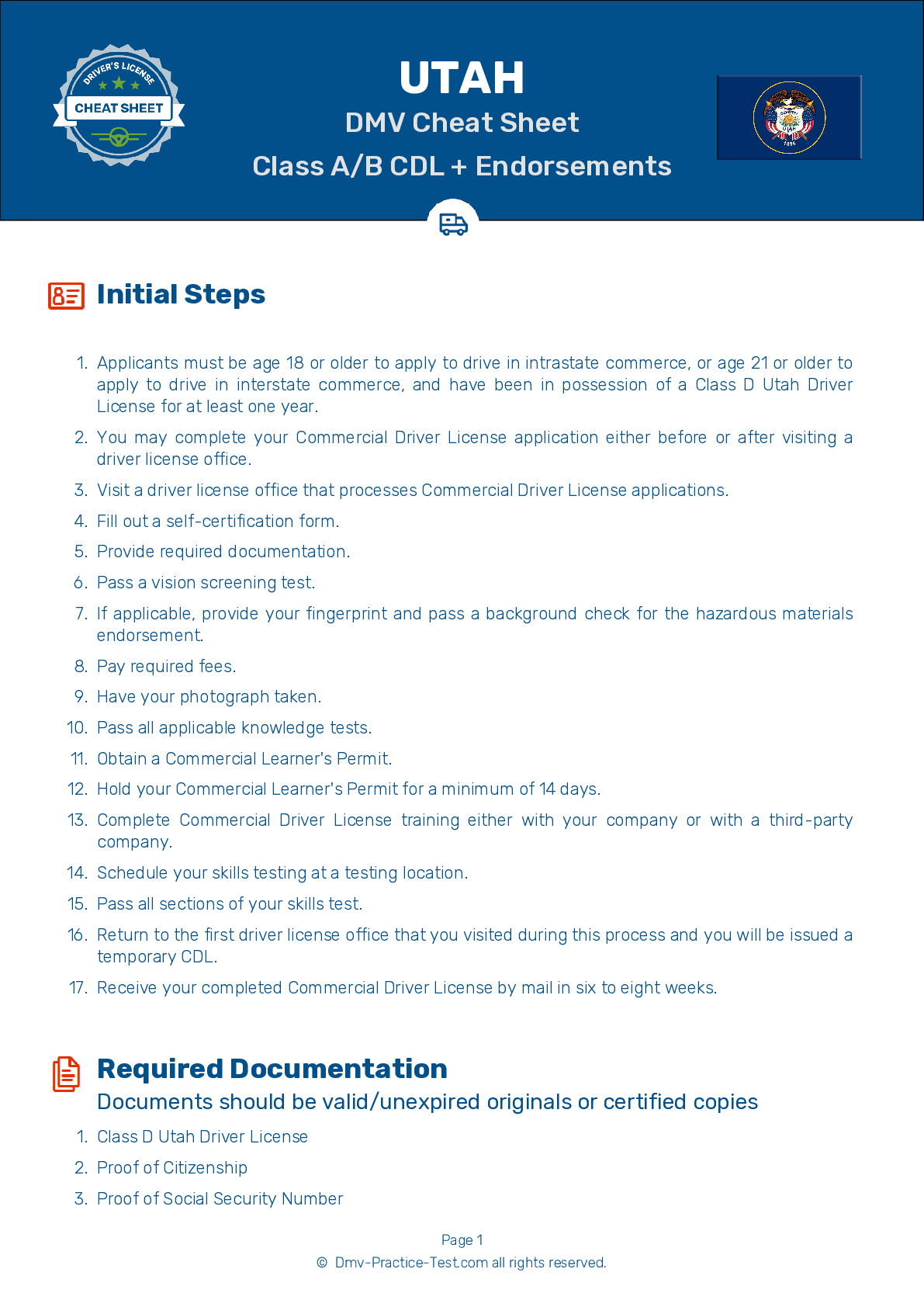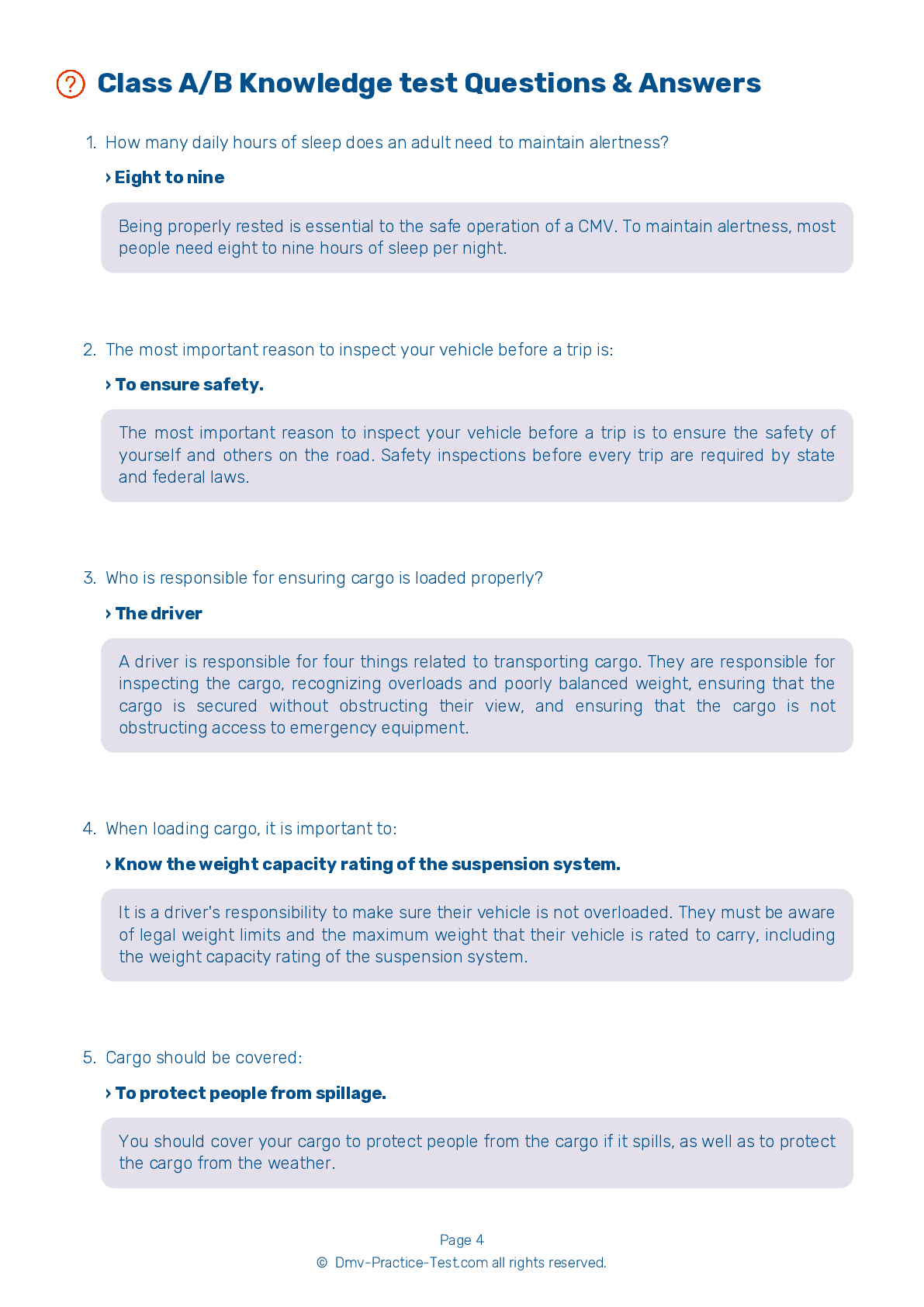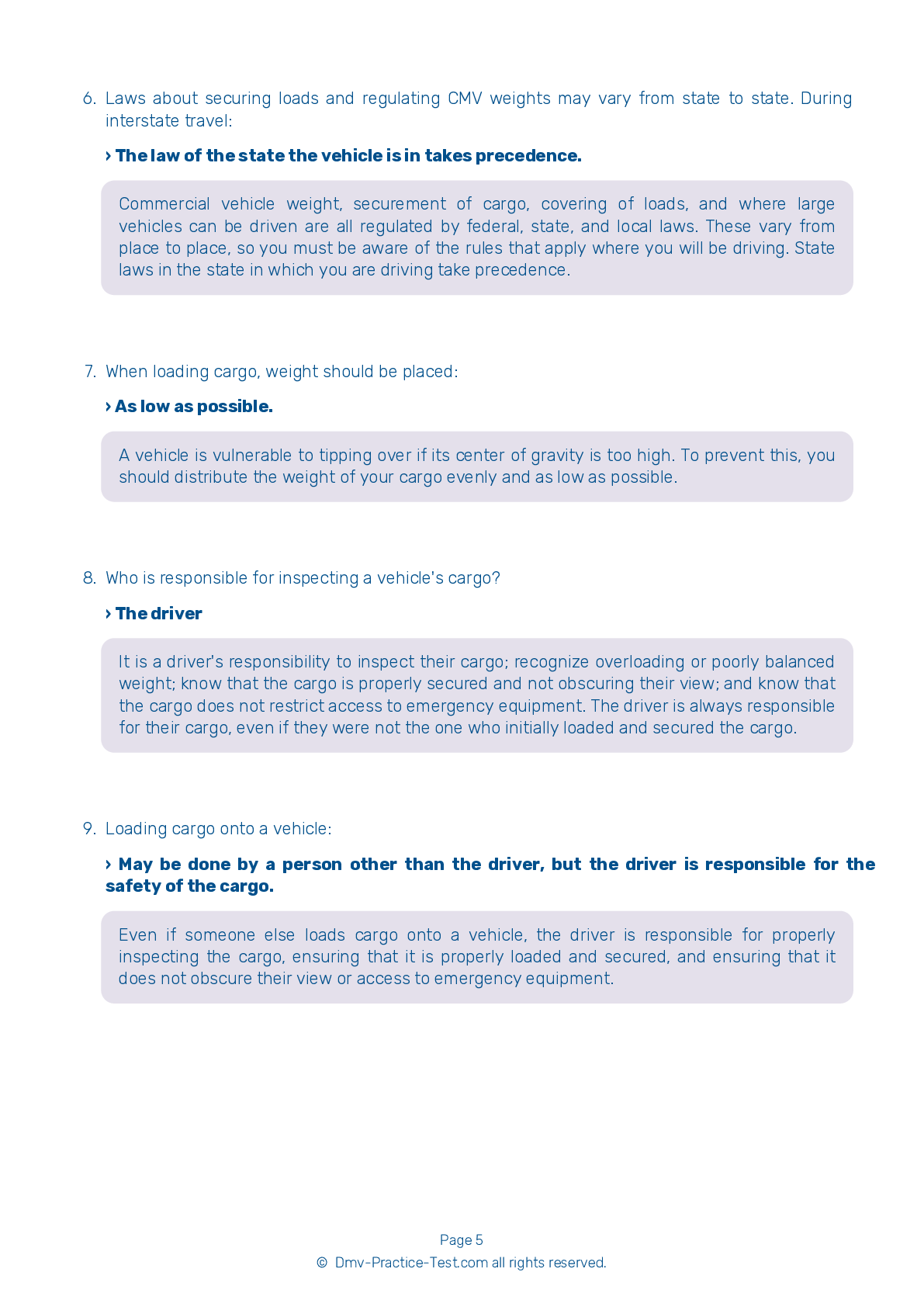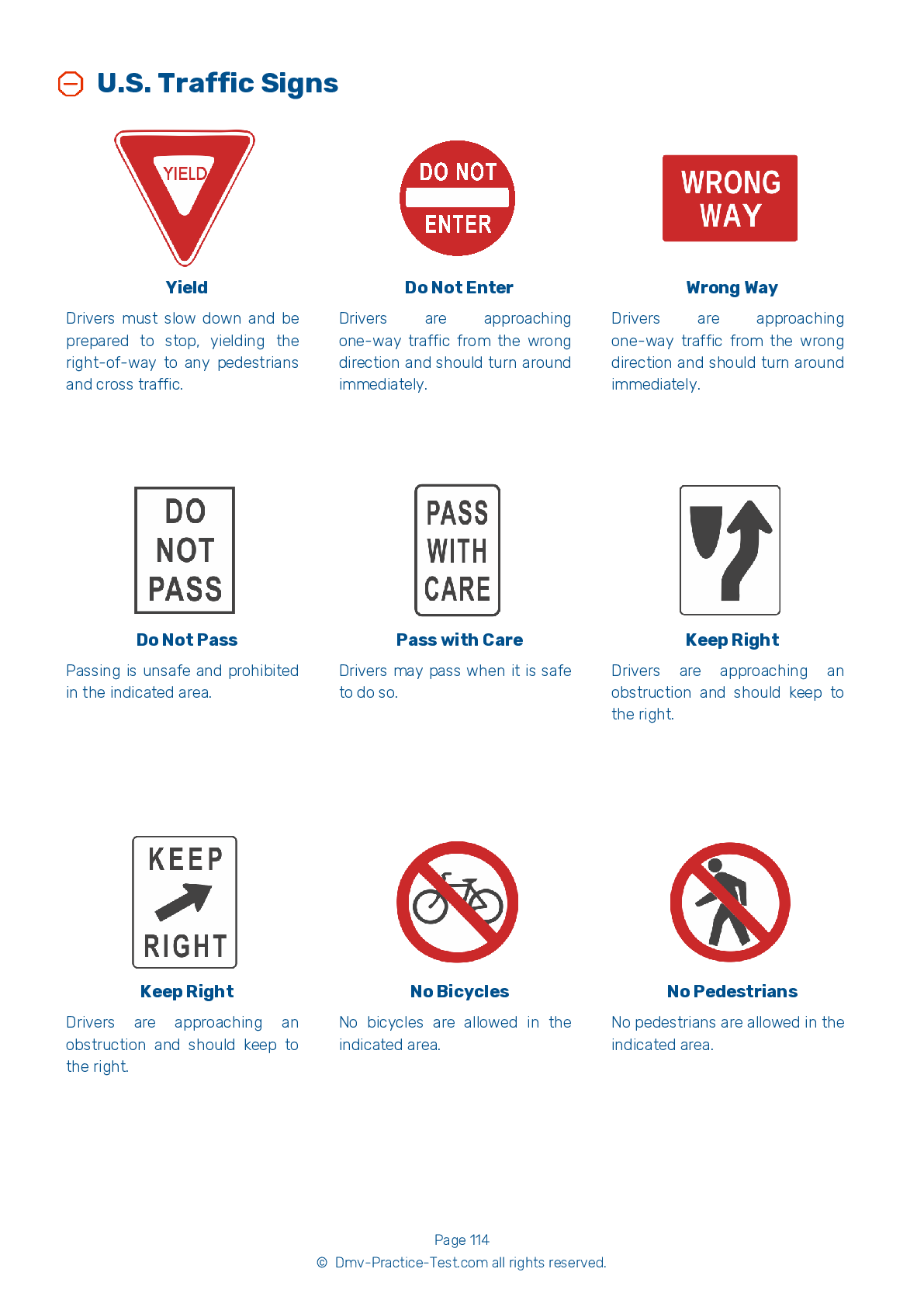Combination #1
Combination Vehicles Practice Test | Utah 2025 #1 Page 2 of 4
Train for FREE online with our Utah CDL combination vehicle test. The official exam test consists of several obligatory parts, with all of them checking your knowledge of different blocks of road rules. If you need to obtain a UT combination license in 2025, practice as much as possible. Free sample tests published on our website will help you check and improve your knowledge and boost your grades. Please bear in mind that DMV requirements for issuing a combination license may vary from state to state.
30
25
20
9 . When braking with ABS, you should:
When operating a vehicle with an Anti-Lock Braking System (ABS), you should apply your brakes in the same manner as you would if operating a vehicle without ABS.
10 . Before a drive, ensure that air flows to all trailers by:
Rolling each trailer down a hill and testing the brakes.
Before a trip, ensure that air in the air brake system reaches all trailers. Do this by waiting for air pressure to build, then sending air to both the emergency and service lines and opening the shut-off valves on the rear of the last trailer. If air escapes from the shut-off valves in the rear of the combination, the air is being supplied to the entire vehicle.
11 . Trailers with low underneath clearance can present challenges when driving over:
Railroad-highway crossings may be difficult to cross when pulling a trailer with a low underneath clearance. In particular, both low-slung units and single-axle tractors pulling long trailers are especially challenging to drive over raised crossings.
12 . The best way to notice if a trailer has begun to skid is to:
Feel the tractor move.
The easiest way to become aware that your trailer has begun to skid is to observe it in your mirrors. Checking your trailer in your mirrors will also allow you to spot any skidding at the earliest possible moment.
13 . In a sudden turn, the ____ trailer is the most likely to turn over.
First
When making a turn, be sure to steer gently and smoothly. Making a quick turn while pulling trailers is dangerous and can increase the risk of the last trailer rolling over.
14 . When coupling, you should:
When coupling air brake hoses, you should make sure the proper pairs of gland hands are connected. They are sometimes color-coded to help drivers avoid mistakes. Typically, blue is used for service lines and red is used for emergency lines.
15 . What is another name for the service line?
The parallel line
The trailer service air line may also be referred to as the control line or signal line.
16 . If the trailer begins to skid, it is best to:
Brake.
If your trailer begins to skid, you should release the brakes to help regain traction. Once the wheels grip the road again, the trailer will begin to straighten out and follow the path of the tractor.
2025 Utah | Frequently Asked Questions
To acquire a CDL Hazmat endorsement in Utah, you must first have a valid Utah CDL. Then, pass the Hazardous Materials Endorsement Knowledge Test, submit to a federal background check and fingerprinting by the Transportation Security Administration (TSA). Finally, you must pay the required endorsement fee. It's recommended to study the Utah CDL Handbook beforehand.
To obtain a CDL Hazmat license, you must have a valid Commercial Driver's License (CDL). You should be at least 21 years old, have a clean driving record, and pass a physical examination. Additionally, you must pass the Hazardous Materials Endorsement Knowledge Test and a TSA background check. It's also important to be proficient in English for reading and speaking.
When applying for a CDL Hazmat endorsement in Utah, you'll need to provide your current CDL, proof of U.S. citizenship or legal presence (like a passport or birth certificate), social security card, and proof of Utah residency. You'll also need to complete the HAZMAT endorsement application and pass the TSA background check.
Yes, there is a dedicated written test for the CDL Hazmat endorsement. It's known as the Hazardous Materials Endorsement Knowledge Test. This test assesses your understanding of the rules and regulations related to transporting hazardous materials. It's recommended to study the relevant sections in your state's CDL handbook before taking the test.
The written test for the CDL Hazmat endorsement covers a variety of topics including: understanding and identifying different types of hazardous materials, rules for safe loading and unloading, proper use of placards and labels, emergency response procedures, and specific regulations regarding the transportation of hazardous materials. It's crucial to study these areas thoroughly.
Yes, there are extra charges associated with acquiring a CDL Hazmat endorsement. In Utah, the endorsement itself costs $9.00. However, you'll also need to pay for a TSA background check, which costs $86.50. Please note these fees are subject to change and it's always best to check the latest fee structure with the Utah Driver License Division.
Yes, a background check and security clearance are required for a CDL Hazmat endorsement. The Transportation Security Administration (TSA) conducts this check, which includes fingerprinting and a review of your criminal history. If you pass the background check, TSA provides a security threat assessment to your state's licensing agency.
Yes, obtaining a CDL Hazmat endorsement requires specialized training and passing a written test. The training covers handling hazardous materials, safety procedures, and emergency protocols. After the training, you must pass the Hazmat endorsement test to demonstrate your understanding of these areas. You also need to pass a TSA background check.
No, it's illegal to transport hazardous materials without a valid Commercial Driver's License (CDL) with a Hazmat endorsement. This endorsement ensures the driver is properly trained and knowledgeable about handling and transporting hazardous materials safely. Driving without the necessary endorsement can result in hefty fines and penalties.
Yes, you can add the CDL Hazmat endorsement to your current CDL license. You don't need to apply for a new CDL. However, you'll have to pass a written test specific to hazardous materials and undergo a TSA background check. Once these are successfully completed, the endorsement will be added to your existing CDL.



